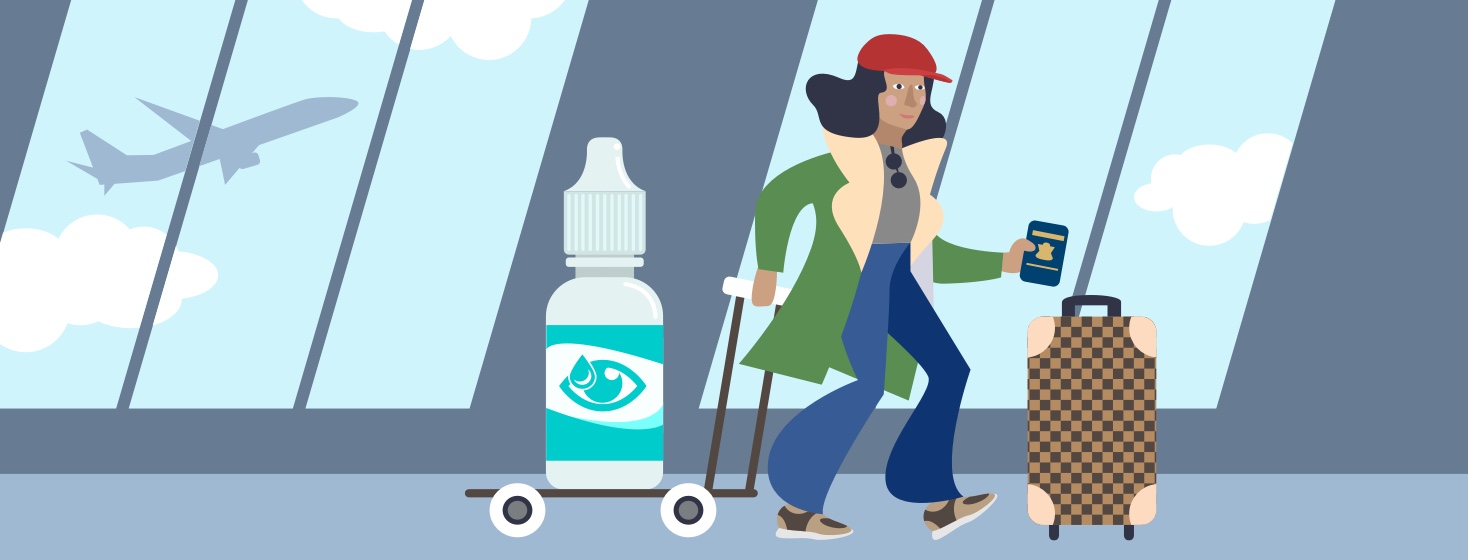Flying Solo
I recently took a trip to visit my parents. I had to navigate airport crowds, TSA, gates, luggage, and seat location on the departures side. On the arrivals side, I had to again work out the details of getting my luggage, disembarking the plane, and following the signs to exit and find my ride.
People do this every day. Why do I feel the need to share this with you? Since I was diagnosed with thyroid eye disease (TED), I have not had to travel by myself. I always have my husband, my wingman. This trip was notable because it afforded me a great feeling of independence.
My eyes are currently in an inactive phase. What this means for me is that my eyes are not protruding. I am not experiencing double vision. I rarely feel shooting pains behind them. That said, a few symptoms still linger. My eyes still water and itch occasionally. They are often sensitive to light and air movement. Additionally, I have difficulty keeping my eyes closed while sleeping. Since my doctor has indicated that this phase may be temporary, I tried hard to enjoy my independence, while also paying close attention to the coping mechanisms and accommodations I was making.
My first time traveling alone since my thyroid eye disease diagnosis
Navigating the airport
Through each phase of travel I could not help but wonder how things might have been different. The airport security was seamless. How would it be if I was seeing double? I could wear a patch over one eye, that sometimes helps me. Would I be asked to take it off? Would I feel self conscious wearing it?
Walking through the airport was not too bad, although my eyes were irritated by the air movement. I carried a tissue with me to dab the tears as they came. I was able to make my way around other passengers stopping in front of me, or merging from the side into the pedestrian traffic. Would that be possible wearing a patch which tends to limit my peripheral vision? The ramps and steps I traversed along the way might be more difficult with a patch as well. It can cause changes to my depth perception.
Flying with some of my TED symptoms
With dry eyes, and the tears that accompany it, I found it difficult to make out the numbers and letters above the seats onboard the plane. The tears and uncomfortable scratchy feeling became problematic due to the airflow on board. Although this time I was able to cope, it surely would be more difficult in the active phases of TED.
Once we ascended above the clouds, some passengers opened their window shades. I was glad I had my sunglasses perched atop my baseball cap. Thankfully, the bill of the cap also helped shield my eyes from the overhead airflow. I made a mental note that, should I need them, my eye drops were in my carryon bag.
Arriving at my destination
When we landed, I stepped out of the plane into bright sunlight. We walked down a long zig zagging ramp, across a blacktop and into a building. That’s a lot of dark-light-dark transitions for someone with thyroid eye disease. I was glad I had my sunglasses and my baseball cap. At that moment I realized that as this disease has progressed, I have learned to adapt.
Although I have some challenges, I am still able to accommodate the symptoms of thyroid eye disease. If my eyes ever enter into an active phase again, I will use this experience to remind myself that with a “CAN DO” attitude, and a little planning, traveling can still be possible.

Join the conversation